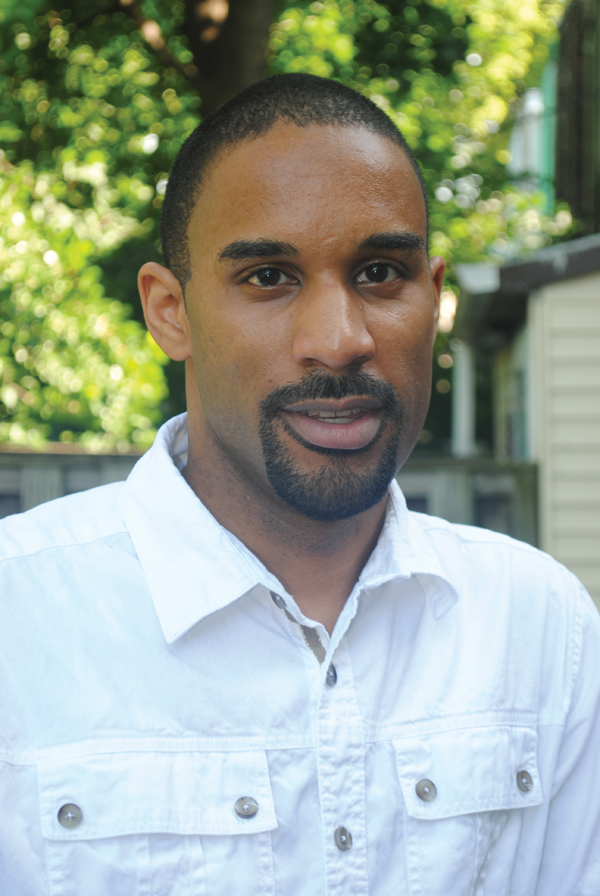Posted: May 19, 2016
Power in Church Leadership: Exploring our shared commitment to doing church together
As a global communion of Anabaptist-related churches, we share a common commitment to doing church together. We also acknowledge that the church needs leaders who take responsibility for guiding and shepherding the flock. Yet we know that in our diverse contexts of church leadership, power gets exercised in many different ways. In this issue of Courier/Correo/Courrier, writers from across our fellowship discuss the different ways in which Anabaptists approach issues of power in church leadership – the struggles and challenges, as well as the blessings and benefits.
Beyond Domination and Control
Periodically, my shoulder is tapped to provide insight for local leaders, churches and Christian organizations about how to be more faithful in becoming a diverse and reconciled body as God intends. A few years ago, I would have responded by focusing my energies on reaffirming the scriptural vision of the New Testament Christian community, in which every barrier has been broken down, first among Jews and Gentiles, and therefore among every social barrier that exists, including our current racial divisions. I might have started by pointing out how Paul confronted Peter on this issue, or how Scripture portrays the radical implications of the Church as an ethnically diverse new society in which the old relational identities and networks are reconfigured because of the work of Jesus, and that the wall that divided us has been torn down, in and through God in Jesus Christ.
Theologically, I still believe this to be the case. Yet that application seems to miss some of the specific historical and current forces at work in most American Churches – and these forces are very rarely addressed.
Is it possible that our primary problem isn’t merely about cultural and ethnic division and difference in the United States? Is it possible that the real issue revolves around how power has been deployed historically among Christians in the church and within the larger society?
In North America, the church has never thoroughly repented of (or turned away from) the racial domination that formed its practices and theology since the seventeenth century. Certainly slavery has been formally abolished, and as a practice thereafter has received a devastating stigma and a negative response from mainstream society at the very mention of the word. It takes no courage to look back at American (Christian) slave history from 1619-1865 A.D., while denouncing it as inconsistent with the way of Jesus.
However, within most Christian communities, it continues to take significant conviction for those that gather under the Lordship of Jesus in the United States to speak patiently and truthfully in vulnerable conversation concerning the practices of white dominance. To the present day these practices have continued to be employed in and by the church, scandalizing its witness in the world. Slavery is gone, but the logics of racial reasoning that produced white dominance and control within Christian gatherings (and beyond its walls) have remained intact.
We must ask why the North American church – including Anabaptism – has lacked the ability to understand the fact that racism is significantly a theology and discipleship concern, troubled by its deployment of power in the church and unconsciously justified through a racial gaze.
Many Christian gatherings would love to have “diverse” communities, manifesting the reconciliation that God has accomplished in Jesus Christ. However, few churches have been willing to let go of the protected and concentrated power and control that run their communities. Essentially, when “diverse” people enter into these “welcoming” communities, they must convert theologically, culturally and socially to the set standards. As is often said, “The White way is the right way.” These standards are not pure Christian values untouched by societal and cultural norms. Nonetheless, they are often utilized and justified as such.
Instead of practicing kenosis (Philemon 2:5-11), a self-emptying of power and entering into mutual vulnerability with racialized and oppressed Christians, in which an intimate encounter of mutual transformation can occur, the dominating and controlling group postures over others in dominance. The temptation has always been to error on holding the necessary power and control over racial minorities, which negates the possibility of the authentic reconciliation so often desired. Reconciliation is more than diverse bodies sharing space every Sunday morning. Where domination and “lording over” continues, no reconciliation has happened. When racial minorities that have historically been crushed and excluded by the practices of power within the church are not given a seat at the table, and when decision-making power is not vulnerably shared, no authentic reconciliation can happen. When the voice of the least powerful is not given priority, and the local body’s ears are not attuned to privileging their voice, the Kingdom of God is not reigning fully amongst us.
To not account for the power dynamics at work in the racialization of our American Anabaptist communities is to misdiagnose why we fail to move beyond a gridlocked pattern of racial conformity in our society, with no witness to our yielding to God’s power in the midst of our human weakness in this area. In our American Anabaptist communities, we need to move beyond domination and control toward self-emptying solidarity and mutuality.
The time has come to recalibrate our theology and practices so that we can more faithfully embody the way of Jesus in a racialized society. Our Anabaptist congregations are probably more prone than most to understand that we should not dominate or “lord over” others. Yet we need to actualize this theology in response to our white-dominated and -controlled churches and denominations.
What would be the result of Anabaptist bookshelves and pulpits not being dominated by white authors and speakers, but fully embracing and wrestling with the entire gifting of the church, especially those that have been historically dominated and excluded? How might our churches make visible God’s reign before a watching world if it were to creatively follow the lead of non-white prophetic Christian movements comprised of the vulnerable and defenseless of our day?
Could it be that our communal worship might be enriched by our daily solidarity and life together with people that have been systematically excluded racially? How might contemporary Anabaptism, which began in the sixteenth century as a visible gathering of disciples committed to following Jesus concretely as a predominately economically oppressed group, get renewed through a renouncing of white dominance, control and “lording over” others? How might it enter into vulnerable solidarity and mutuality with racially oppressed people? How might it seek the shalom and well being of those within and beyond our Christian communities?
 Drew G. I. Hart (drewgihart.com/) is a self-identified black Anabaptist, MennoNerds blogger and former pastor at Harrisburg Brethren in Christ Church (Pennsylvania, USA). He is also a doctoral student whose research focuses on black theology and Anabaptism.
Drew G. I. Hart (drewgihart.com/) is a self-identified black Anabaptist, MennoNerds blogger and former pastor at Harrisburg Brethren in Christ Church (Pennsylvania, USA). He is also a doctoral student whose research focuses on black theology and Anabaptism.

Comments: